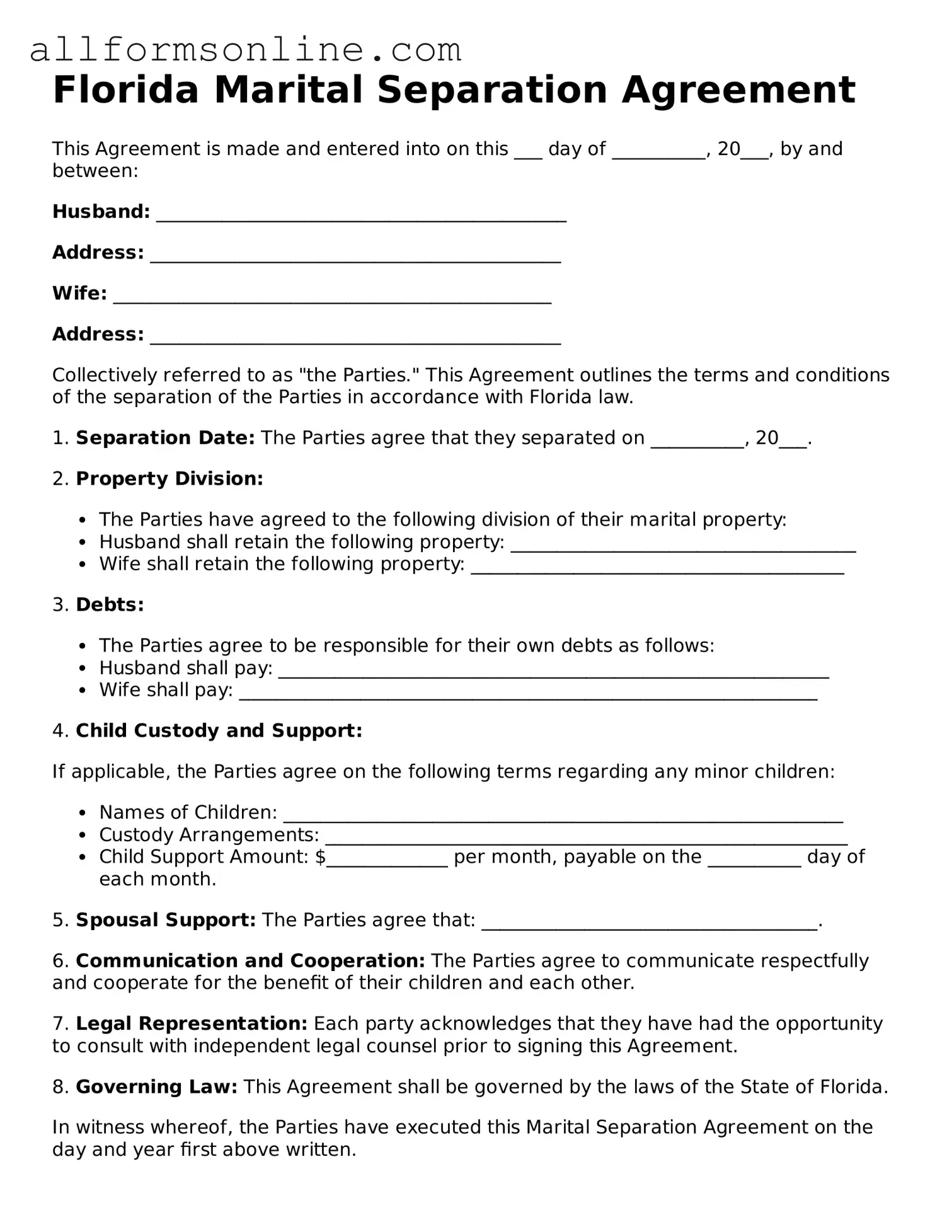What is a Florida Marital Separation Agreement?
A Florida Marital Separation Agreement is a legal document that outlines the terms of separation between spouses. It addresses issues such as property division, debt responsibilities, child custody, and support obligations. This agreement serves as a framework for both parties while they live separately and can help reduce conflict during the separation process.
Is a Marital Separation Agreement legally binding in Florida?
Yes, a Marital Separation Agreement is legally binding in Florida, provided that both parties sign the document voluntarily and with a clear understanding of its terms. It is advisable for each party to consult with a legal professional before signing to ensure that their rights are protected and the agreement is fair.
Can a Marital Separation Agreement be modified?
Yes, a Marital Separation Agreement can be modified if both parties agree to the changes. It is important to document any modifications in writing and have both parties sign the revised agreement. This ensures that all changes are legally recognized and enforceable.
Do I need an attorney to create a Marital Separation Agreement?
While it is not legally required to have an attorney to create a Marital Separation Agreement, it is highly recommended. An attorney can provide guidance on legal rights, help negotiate terms, and ensure that the agreement complies with Florida laws. This can prevent potential disputes in the future.
What should be included in a Marital Separation Agreement?
A comprehensive Marital Separation Agreement should include the following elements: division of assets and debts, child custody arrangements, visitation schedules, child support and spousal support obligations, and any other relevant issues specific to the couple's situation. Clarity in these areas can help minimize misunderstandings later on.
How does a Marital Separation Agreement affect divorce proceedings?
A Marital Separation Agreement can simplify divorce proceedings by establishing clear terms for asset division, support, and custody. Courts often view these agreements favorably, as they demonstrate that both parties have reached an understanding. However, it is important to note that a separation agreement does not automatically lead to divorce.
Can a Marital Separation Agreement address future changes in circumstances?
Yes, a Marital Separation Agreement can include provisions for future changes in circumstances, such as changes in income or employment status. Including these provisions can help both parties navigate unexpected life events and reduce the need for future legal disputes.
What happens if one party does not comply with the Marital Separation Agreement?
If one party fails to comply with the terms of the Marital Separation Agreement, the other party may seek legal enforcement through the courts. This could involve filing a motion to compel compliance or seeking modification of the agreement. Courts take these agreements seriously, so it is important to adhere to the terms outlined.
How long does it take to finalize a Marital Separation Agreement?
The time it takes to finalize a Marital Separation Agreement can vary widely depending on the complexity of the issues involved and the willingness of both parties to negotiate. Some agreements can be completed in a matter of weeks, while others may take months. Open communication can help expedite the process.
Is it necessary to file the Marital Separation Agreement with the court?
In Florida, it is not necessary to file a Marital Separation Agreement with the court unless it is part of a divorce proceeding. However, having a signed copy can be beneficial for personal records and can be referenced in future legal matters. Keeping the agreement accessible is important for both parties.
